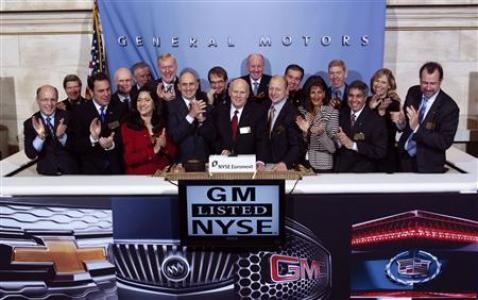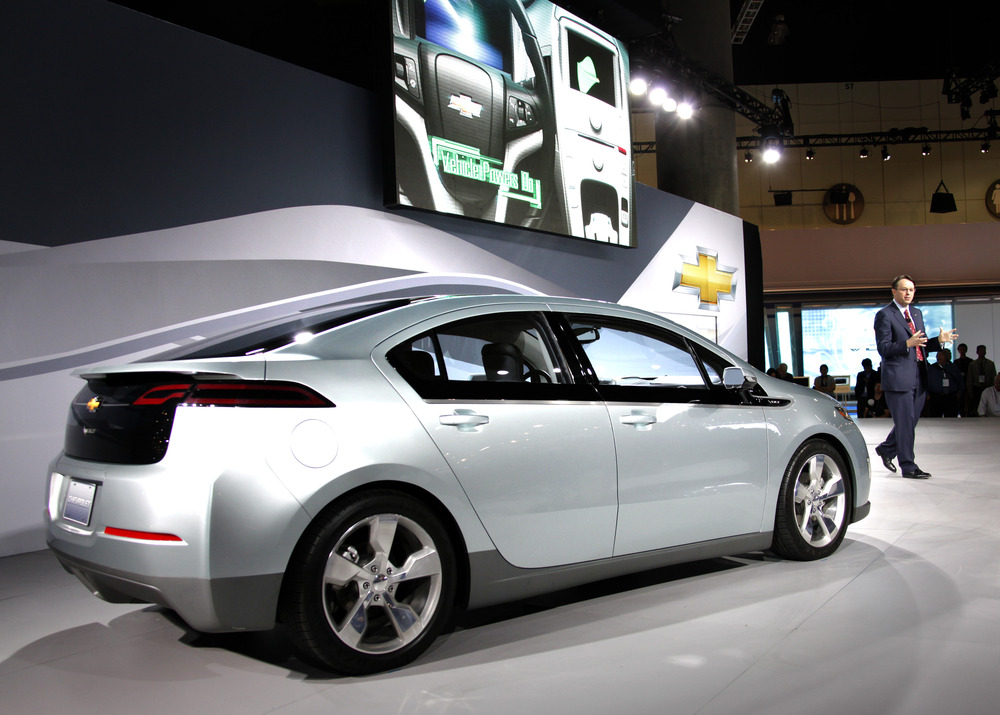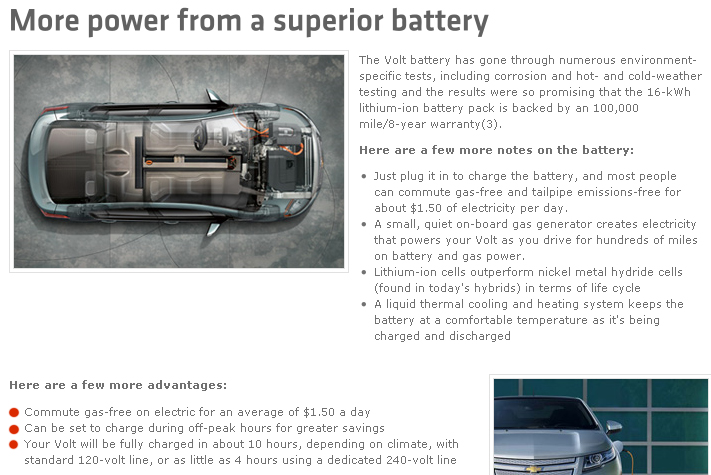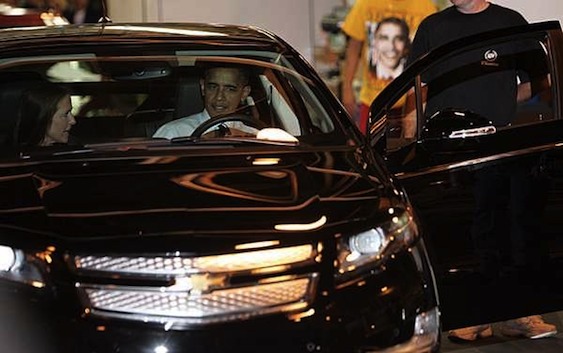
11.19.2010
GM Back on the Road
original article written by Net Advisor™
GM launched their new public company raising some $20.1 Billion, and as expected (reference GM IPO Predictions paragraph eight) in what has been called the largest Initial Public Offering (IPO) in U.S. history (Source: Reuters).
The demand for GM stock was huge, and GM (or its owners) allotted to sell more stock to investment institutions and the public and at a higher IPO price of $33 share. In total, 478 million common shares were sold.
The Sellers
The sellers in the new GM stock offering were the U.S. Treasury who intended to sell 358.5 million GM shares at the IPO price, which would reduce its ownership of GM to 36.9% from 60.8%. Canada intended to sell some 30.5 million shares reducing its ownership in GM to 9.6%, and the United Auto Workers Union (UAW) sought to sell 89 million shares, reducing its ownership of GM to 14.17%. These percents of ownership could be lowered if the owners decide to exercise their rights to sell more stock at the IPO price within a specified period (Source: Reuters).
[wikichart align=”left” ticker=”GM” showannotations=”true” livequote=”true” startdate=”18-11-2010″ enddate=”20-11-2010″ width=”570″ height=”365″]
The Buyers
About 80% of the GM stock buyers were investment institutions (mutual funds, pension funds, hedge funds, investment banks, etc). About 20% of new GM stock was sold to the general public (Source: ABC News). One of the institutions was a foreign buyer. SAIC Motor Corp, a Hong Kong company bought $500 million worth of GM stock at $33.00 per share.
What one will never hear from the Obama Administration is that what has effectively happened with GM’s IPO is that a “balance transfer” occurred in part from the taxpayer to “Wall Street” – and Hong Kong.
Wall Street has been publicly despised and chastised (reference 3) (reference 4) by the Obama Administration. However “Wall Street” had helped the Administration remove $20+ Billion burden off the tax payers. The President should be reminded, despite contrary belief that a capitalistic free market society does serve a public purpose. And no one was forced to buy GM stock – at least that we know of.
The Fanfare
As expected the publicity around the IPO had been in the press for many months and then daily up until the IPO. This is a big offering, and Gm was once a big company with a lot of history, so yes; this is something to talk about.
The New Stock
GM’s stock opened up at $35 a share on November 18, 2010 and hit a high of $35.99 before closing at $34.19. The net was a 3.60% gain if one purchased the stock at the IPO price of $33. However for those looking to cash in on this so called “Hot IPO” and bought on the first day of trading may have experience a little paper loss.
The Politics of GM
President Obama made a speech right after the market closed on the GM’s IPO debut, calling this a big step toward a “success story.”
“Today, one of the toughest tales of the recession took another big step toward becoming a success story…”
— Source: President Obama’s speech, 11-18-2010, CBS News
It’s hard to call GM anywhere close to a “success story” or “good news for U.S. tax payers,” because tax payers are still underwater with GM and this is likely to be for a long time to come.
We don’t know if the intent of government to call GM’s bailout and subsequent IPO a victory, when tax payers have not even broken even on GM’s bailouts.
In my professional opinion, if it wasn’t for government (tax payer) and multiple bailouts of GM and special concessions, considering the debt it was sitting on, the health care and pension liabilities, and with the auto sales in the toilet, GM would have not made it out of bankruptcy. So one can try and turn around a company, as long as you have unlimited amounts of money being thrown at you.
The Other Bankrupt Car Company
Chrysler on the other hand has gone through two bankruptcies, one in 1983 and the other in 2009. Chrysler was handed $14.3 Billion in TARP funds, and that money is not likely ever to be repaid (Source: Bloomberg). The Obama Administration seems to have given up on Chrysler, as they allowed Chrysler to be sold to the Italian automaker, Fiat [Source: NY Times (PDF Article)].

Image: “Chevrolet Global Vice President Brent Dewar introduces the 2011 Chevrolet Volt at the Los Angeles International Auto Show in Los Angeles, California. December 2, 2009. (Source: Chevrolet News Photo)
The Next Bailout: Government Continued Efforts to Jump Start GM
The U.S. government is insuring to help GM become more profitable. GM will not have to pay $45.4 Billion of taxes on profits GM makes for the next 20 years.
“General Motors Co. will drive away from its U.S.-government-financed restructuring with a final gift in its trunk: a tax break that could be worth as much as $45 billion.”
— Source: Wall Street Journal
Part of this tax credit is what is called “loss carried forward.” These are losses that old and bankrupted GM incurred. Yet, with a government assistance, new GM will be able to write off those old losses on against future profits. The result is that GM may not have to pay taxes for up to 20 years (Source: Wall Street Journal).
If you file bankruptcy, generally you don’t get to carry losses from that bankruptcy to a new entity. But did we tell you the government is running the show? So, yes this is in effect another bailout, although the government won’t call this a new bailout, but no other American or other company is receiving a similar benefit. The Journal stated that Ford has some loss carried forward, but they didn’t file bankruptcy or take TARP money.
The Solution? Will Volt Recharge GM’s Financials?
GM’s prized “Green” car – the Chevy Volt – is coming soon at a showroom near you. To help bring excitement to this vehicle, on the day of GM’s IPO, Motor Trend conveniently named the Volt, “Green Car of the Year.” The key for a public company is not what trendy award one received, but what are the vehicle sales?
The Volt is by no means a low cost car. The vehicle to be priced around $41,000 (Source: Wall Street Journal). In a recession, especially where 40 million Americans are on food-stamps, most people are not going to rush out to buy a $40,000+ car. To get better fuel economy would people spend $41,000 on a Chevy or $23,000 on a Toyota Prius and save $18,000?
One also has to consider using a car that charges on their home electricity will add costs to owning that car. The monthly bill will come from the power company. GM states that the costs of electricity used to charge the Volt about “$1.50 an hour.” Not sure where GM unplugged this number, but electricity prices are not equal nationwide. At 10 hours a day x 30 days a month = $45.00 added per month on your electricity bill, plus electricity taxes.
Even though the vehicle can run on gas its distance is limited. This is not a car that one drives from California to Orlando. It is designed for short trip, and a lot of charge time. The Volt can travel only 40 (forty) miles on a full charge.
“The Volt can drive for 40 miles on a single full electric charge of its battery pack.”
— Source: GM-Volt.com (PDF)
Just don’t see this vehicle in its current form as being practical for the money. The Prius, albeit does not compare in style as to the Volt, however the Prius can travel an estimated 48 MPG all day long with no range issues short of a body of water and no re-charge (Source: Toyota.com/prius-hybrid).
The time it take to charge the Chevy Volt may also weigh on consumer’s patience.
According to GM, “Volt will be fully charged in about 10 hours, depending on climate, with standard 120-volt line, or as little as 4 hours using a dedicated 240-volt line.”
— Source: General Motors (Image File)
Image from chevrolet.com/volt (DTD 11-19-2010)(click image below to enlarge).

The Tax Credit: More Government Assistance
Next, the U.S. government is going to help people buy this Chevy Volt with a whopping $7,500 tax credit.
Keep in mind that a tax credit does not mean we get $7,500 off the sticker price; it means we pay the full negotiated price of the car, and at next tax season, we can take up to a $7,500 credit off our income taxes – if one qualifies.
This is kind of a throw away argument as if you don’t have a job, or have little income you probably won’t need a tax credit.

GM advertised that the Volt is really $32,780 after the tax credit. One might argue that it may be a little misleading to say that one’s “net price” of the car is “$32,780.” This assumes the $7,500 tax credit which GM clearly states in their ad, however one is not making payments on a $32,780 car, they are making payments on a $41,000+ car plus sales tax [$3,587.50 at 8.75% (CA)], plus license, registration, etc. The tax credit may also be reduced to zero if your income is too high:
“…the full federal tax credit… ranges from $0 – $7,500…”
— media.GM.com (PDF)
Best talk to a tax advisor if one is looking for a tax credit before buying or leasing this vehicle. What is attractive is the 8 year, 100,000 warranty (on the battery), and a 3 year/36,000 mile bumper-to-bumper warranty. Did not see anything about maintenance coverage. That could be a concern on a new model car. The vehicle is loaded with all the bells and whistles one would probably need including voice activated Navigation, Blue-tooth, a Bose stereo, and a hard drive with an USB input.
The Volt is not going to be available everywhere at first, thus limiting potential sales, but also testing the market for actual demand. The Volt will be limited to seven markets initially: California, Texas, New York, New Jersey, Connecticut, Michigan and Washington D.C.
The Critics
The critics of GM have been hard on GM, the bailout and the government influenced restructuring and control. At least one critic accurately warned of GM’s issues beginning in June 2008. GM is working on other models outside the volt, but is moving more toward electric vehicles as the Obama Administration had been pushing with a $2.4 Billion taxpayer subsidy for “green cars.”
Not The End
However in all fairness it’s too early to call GM’s future based on a few trading days or a single vehicle. There is a lot of weight on the Volt and its success, but GM may be surprised on its initial reception beyond general enthusiasm. It takes sales, and a lot of sales and efficiency to get your stock price up.
GM has a lot of work to do and this will undoubtedly take a lot of time perhaps several years to see how GM is ultimately performing. As soon as government can stop subsidizing GM and creating incentives for the public from Cash for Clunkers to tax credits to buy cars, we really won’t have a true picture how GM is performing on its own.
images © their respective owners
red dots and red lines added to highlight area of subject matter.
Copyright © 2010 Net Advisor™ All Rights Reserved.
Revised Copyright © 2020 NetAdvisor.org® All Rights Reserved
NetAdvisor.org® is a non-profit organization providing public education and analysis primarily on the U.S. financial markets, personal finance and analysis with a transparent look into U.S. public policy. We also perform and report on financial investigations to help protect the public interest. Read More.

